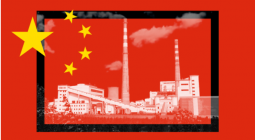In 2020, China’s “new infrastructure” emitted 7.24% less carbon than traditional infrastructure: Greenpeace

A new report from Greenpeace East Asia calculated emissions across China’s “new infrastructure” industries — ranging from 5G, AI, and data infrastructure to electric vehicles, ultra-high voltage (UHV) power lines, and “smart” solution for cities, such as traffic and education — and found that emissions in these industries are 7.24% less than in traditional infrastructure.
“The majority of new infrastructure’s emissions come from upstream and downstream industries. As long as the whole new infrastructure supply chain relies on China’s high-emissions energy mix, cutting emissions here will be a struggle. This impact needs to be addressed holistically,” said Zhang Kai, deputy program director in Greenpeace East Asia’s Beijing office.
On September 22, China’s State Council adopted the14th Five-Year plan for New Infrastructure Development,¹ after increases in new infrastructure investments in 2020. In the most narrow sense, new infrastructure refers to infrastructure for 5G, AI, big data, and electric vehicle infrastructure, such as charging stations. This report also looked at related industries, like high-speed rail, UHV, and smart solutions for traffic, education, and other municipal infrastructure services.
This report calculated emissions from new infrastructure industries by doing an input-output analysis of publicly available documents, mostly from the National Bureau of Statistics. The report derived total emissions from the production process. While policy language has focused on low-carbon development in new infrastructure projects, there are still no specific green standards for the supply chains of these projects. Similar to traditional infrastructure, investment in new infrastructure is a core tool for provincial governments to boost their GDP, recover the impact of COVID on the economy, and stimulate growth.
“The goal of infrastructure investment is often to increase productivity in the supply chain. Addressing the carbon profiles of individual projects, then, only goes so far. Without specific environmental standards for the entire supply chain, high carbon emissions will remain a major byproduct that offsets any low-carbon advances in project planning,” said Zhang.
GREENPEACE EAST ASIA






